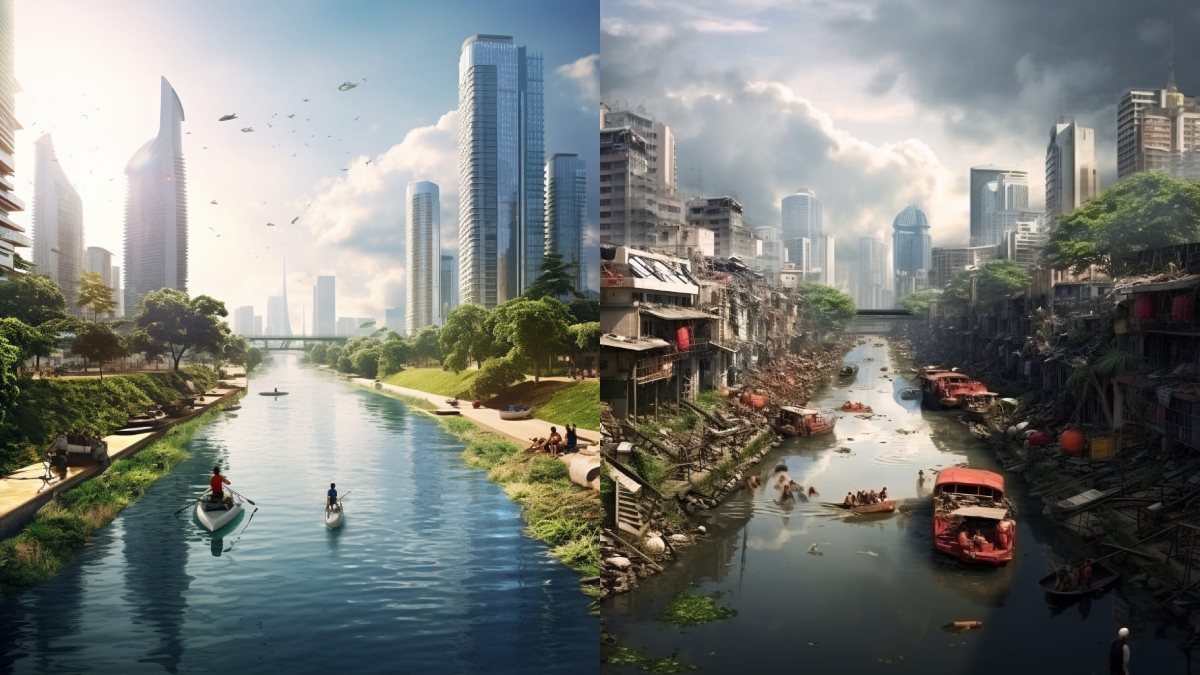Philippine-based architect Christian Vasqyez recently utilized an artificial intelligence (AI) program to generate two contrasting visions of the Pasig River in the year 2050. The images serve as a stark reminder of the environmental choices ahead.
The first vision illustrates a pristine Pasig River, with crystal-clear waters and lush green surroundings, where locals can be seen relishing its beauty. On the contrary, the second image portrays a grim reality where the once-iconic river has been transformed into a congested slum reminiscent of a squatter’s settlement.
These visualizations have evoked strong reactions from the public, as Filipinos reflect on the future of the river and the broader implications for urban planning and environmental stewardship.
One online user expressed the importance of a coordinated effort, referencing the successful rehabilitation of Boracay: “We need a whole-of-government approach and a commanding leader to implement a good vision for our water bodies just like how Boracay was cleaned and saved from eventual degradation.”
Another netizen shared their aspirations for the river, “My wish is to see rich marine life for Pasig River with people swimming, boating, and fishing. More than the modernity, industrialization, and concrete jungle that surrounds it now. This would mean the air is clean for us to live. But that’s far from reality now, isn’t it AI?”
These visual predictions have spurred discussions about the path the Philippines will choose in its urban and environmental endeavors, emphasizing the significance of sustainable decision-making for the future.






